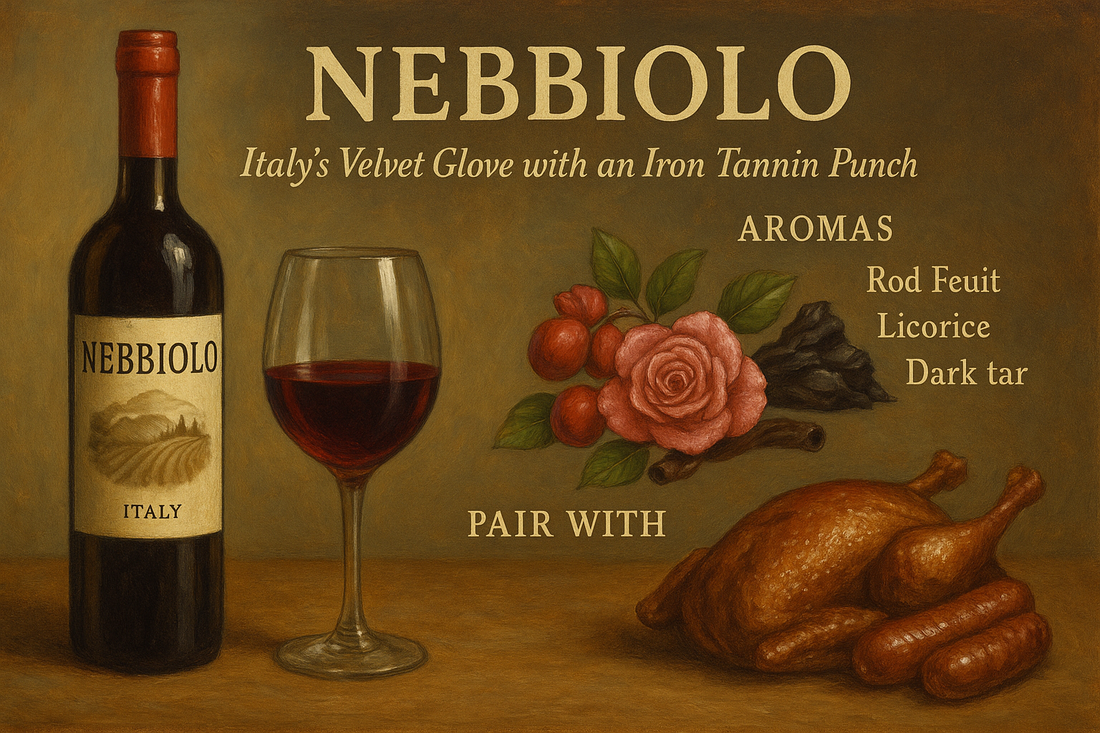
Nebbiolo (aka "The Opera Singer of Italian Reds”)
The pride of Piedmont and the diva of Italian reds. This grape is famously picky, thriving best in the rolling hills of northwest Italy, particularly in Barolo and Barbaresco. While other regions have tried their hand, Nebbiolo’s soul remains Italian. Don’t be fooled by its lighter color... this wine delivers a heavyweight punch of tannin and complexity. Expect aromas of red fruit, rose petals, licorice, and earthy tar, all layered with minerality. Aged Nebbiolo transforms dramatically, becoming smoother and more elegant with time, like an opera star who only improves with age.
Tasting Tips
- Give it time: Nebbiolo often needs to breathe for an hour or more.
- Don’t judge by color: light in the glass, powerful on the palate.
- Best enjoyed in large-bowled glasses to capture complex aromas.
- Consider cellaring: well-made bottles can age gracefully for decades.
- Pair with fatty dishes to balance Nebbiolo’s assertive tannins.
Characteristics:
- Color: Light ruby to garnet, often deceptively pale.
- Aromas: Red cherry, rose petals, licorice, tar, earth, and minerals.
- Structure: High tannin, high acidity, medium alcohol.
- Style: Bold, layered, and long-aging.
Food Pairing Spotlights:
- Duck Confit: The richness of duck tempers Nebbiolo’s strong tannins. Add a cherry glaze for a perfect flavor bridge.
- Sausage Ragu: Hearty sauces mellow the wine’s grip. Try it with a touch of fennel to echo Nebbiolo’s herbal notes.
- Beef Roast: The fatty marbling softens tannins and elevates Nebbiolo’s complexity.
- Mushroom Risotto: The earthy character of mushrooms mirrors Nebbiolo’s tar and mineral undertones.
Fun Extra Info:
- The name “Nebbiolo” is believed to come from “nebbia,” Italian for fog—common in Piedmont’s autumn harvest season.
- Known as the “iron fist in a velvet glove” for its deceptive elegance and powerful tannic structure.
- Barolo is often nicknamed the “King of Wines” while Barbaresco is called the “Queen of Wines.”
- Some bottles can age 30–40 years, evolving in complexity over decades.
